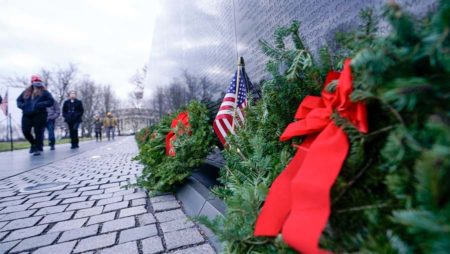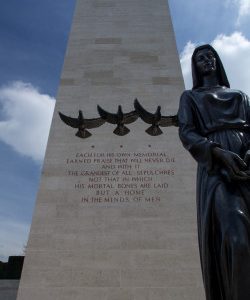
Posting this blog on the fifth of each May has become a tradition for me.
Liberation Day (also known as Freedom Day) for the Netherlands (Holland) was 5 May 1945. Canadian forces along with other Allied forces were able to obtain the surrender of German forces in the small Dutch town of Wageningen. This led to the complete German surrender and liberation of the country. The Netherlands was one of the last European countries to be liberated. Two days later in Reims, Generaloberst Alfred Jodl signed the document for the unconditional surrender of the German armies.
Did You Know?
Did you know that for the past thirty years, “Wreaths Across America” has been responsible for placing holiday wreaths on thousands of American military graves? The secularist non-profit organization, “The Military Religious Freedom Foundation” (MRFF) has declared this tradition to be “unconstitutional, an atrocity, and a disgrace.” They believe the wreath-laying to be the “desecration of non-Christians veterans’ graves.” The MRFF says, “. . . forcing the non-Christian dead who didn’t celebrate Christmas in life to celebrate it in death.” Perhaps we should all take the position that the wreaths are really meant to celebrate, remember, and honor American veterans, fallen or otherwise.

Netherlands American Cemetery (Margraten)
There is a cemetery near Maastricht. It is the final resting spot for 8,301 American soldiers and a memorial for 1,722 men missing in action. They were the casualties of Operation Market Garden (17–25 September 1944) and other battles aimed at liberating Holland. Operation Market Garden was a failed Allied attempt to liberate Holland while on their march to Germany and Berlin. Other military cemeteries are located nearby for the British and Canadian men who did not survive the battle. Learn more about Operation Market Garden here.

Four generations of Dutch families have adopted every man who perished in the battle. Each man’s grave is kept up and decorated by their adopted family. Every Memorial Day, American Embassy staff greets the Dutch families as they arrive at the cemetery to lay down flowers and wreaths. Even a portrait of their adopted soldier sits in their respective homes. Read More May 5, 1945
